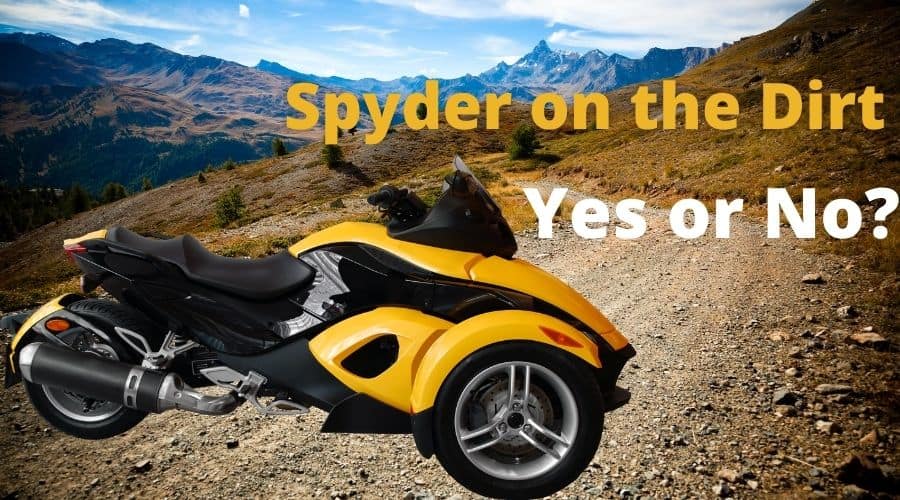One of the most common questions asked is: “Can I take my Can-Am Spyder on to dirt roads?” by both current and future owners.
It sounds so inviting to be able to take your 3 wheel machine and whip it around the corners, while letting the backend slide out. It certainly will make you feel like riding a jet ski.

You can ride a Can-Am Spyder on dirt and gravel roads, though it isn’t advisable for road-based models such as the Spyder F3 and RT as you may damage the drive belt with gravel rocks. Can-Am released the Ryker several years ago to address riders who desired to take their Spyder offroad, but risked voiding the warranty or chasing damage. Should you desire a Spyder yet want to ride mainly on dirt, then the Ryker is much better suited.
There are certainly ways to get your Spyder offroad-ready without needing to essentially buy 2 motorcycles.
Getting a Can-Am Spyder Offroad
To setup your Spyder for gravel roads, it’s best to get a belt guard to prevent rocks flicking up and damaging the drive wheel and belt. Another great tip is to simply drive slower.
Understandably, the marketing wizards at Can-Am invite us to ride recklessly with their promotional content. In reality, however, it’s easy to damage a Spyder if you’re riding too fast on dirt roads. The exception is, of course, the Ryker which can safely handle such terrain at speeds.
Another tip is to carry a spare belt with you for repairs on the side of the road. Given the Spyder is belt-driven, not chain-driven like dirt bikes or dual sport motorcycles, these can break with abrasion that you’ll find with hot tar, ashphalt, gravel and loose rocks.
Speeds for Spyder on dirt roads.
As we’ve mentioned, it’s best to ride a little slowly if you’re taking your Can-Am Spyder offroad.
Ideally, aim for 30 miles per hour when riding a Spyder on the gravel, even if it’s your own driveway. In some areas, you may find the gravel is more hard-packed and thus, you may feel comfortable to stretch into the 40 to 50 mile per hour range.
You’ll generally know what’s safe and comfortable by the amount of stones which are being picked up. You’ll hear their ‘ping’ underneath the body of your trike. If it’s overwhelming, then you’re definitely riding too fast for the conditions.
Do remember that it takes longer to stop on gravel tracks and you run the risk of sliding under heavy braking. Your ABS also doesn’t really have as much effectiveness and could even work against you in such situations.
Things to consider
If you have a pillion passenger, then this changes the dynamics. With more force on the rear tyre, there’s less risk of losing traction but also, might create more stopping distance when offroad.
You also have to consider other road users. Should you be riding on logging routes, then these truck drivers often drive recklessly because they’re being paid on each load carted, as opposed to hourly rates. Even if they are paid hourly, then their often tested to ensure they’re sticking to expected run times.
Be wary around corners and give other vehicles plenty of space. On muddy roads, the Spyder certainly becomes a loose weapon and you can have a lot of fun, but things can certainly go wrong too!
Final thoughts
It’s fun to take a Spyder offroad, but if this is your intention going forward, then we can recommend the Ryker. It’s so much more fun making the back end loose through the corners!
Should you live on a rural property, then don’t let the fear of riding offroad to get to your garage put your off from buying one of these incredible machines. After all, you’re only riding a short distance before finding yourself on the freedom of the highways!
